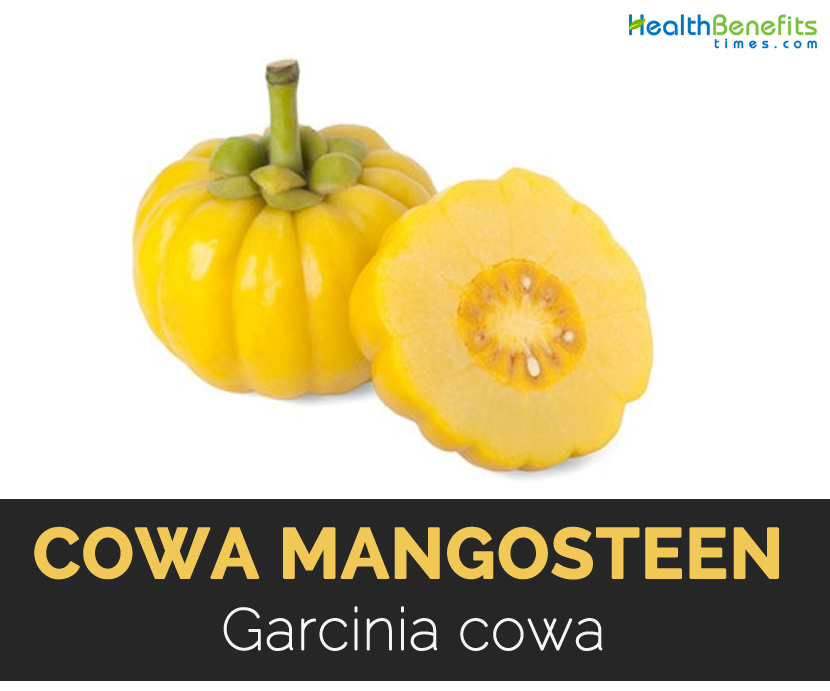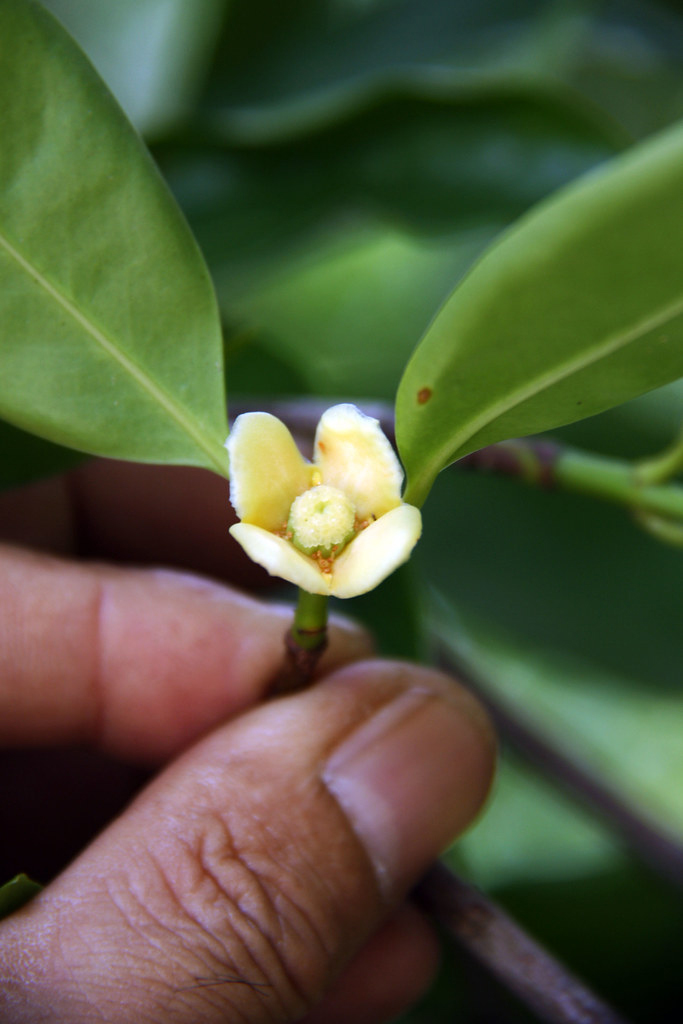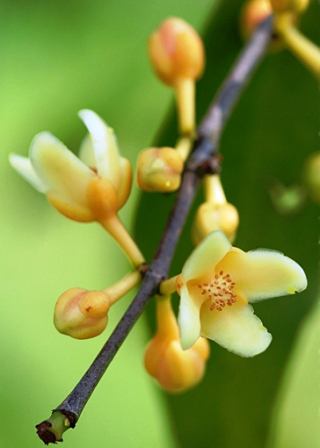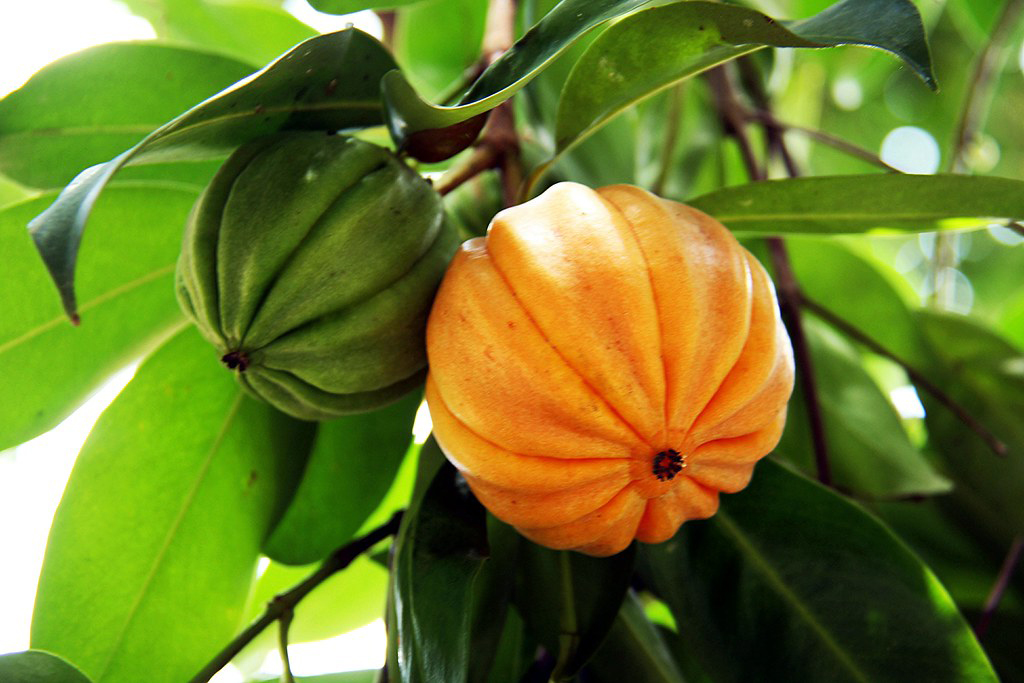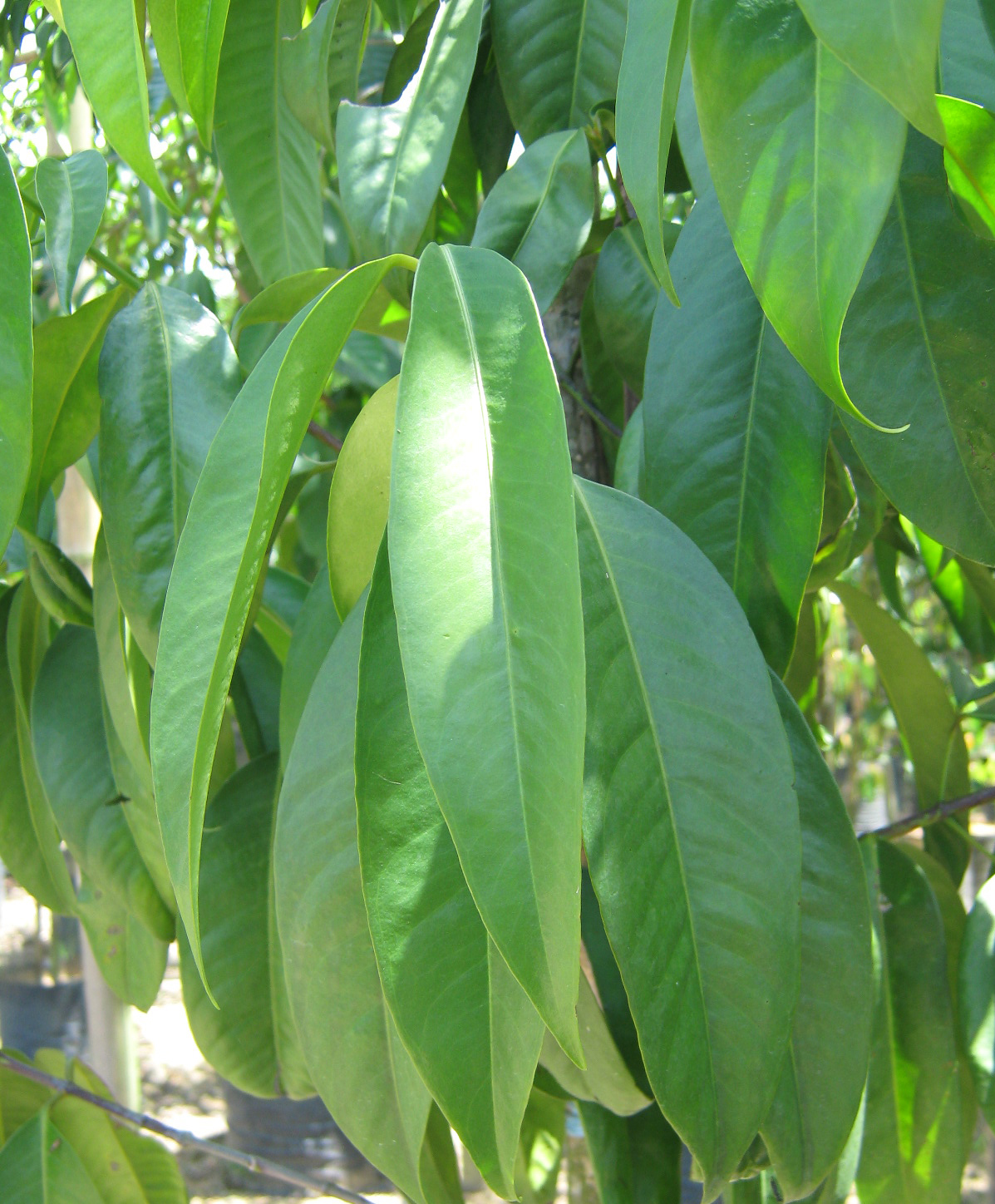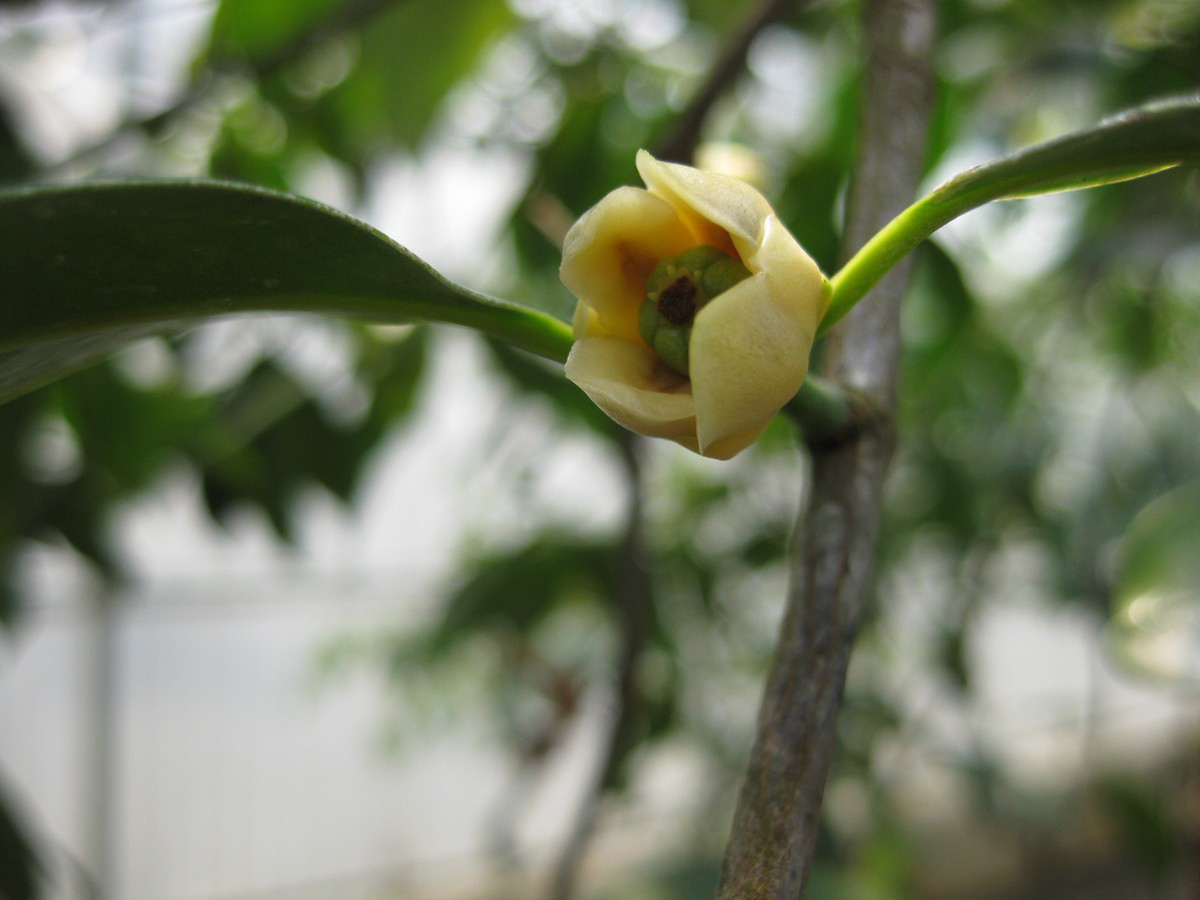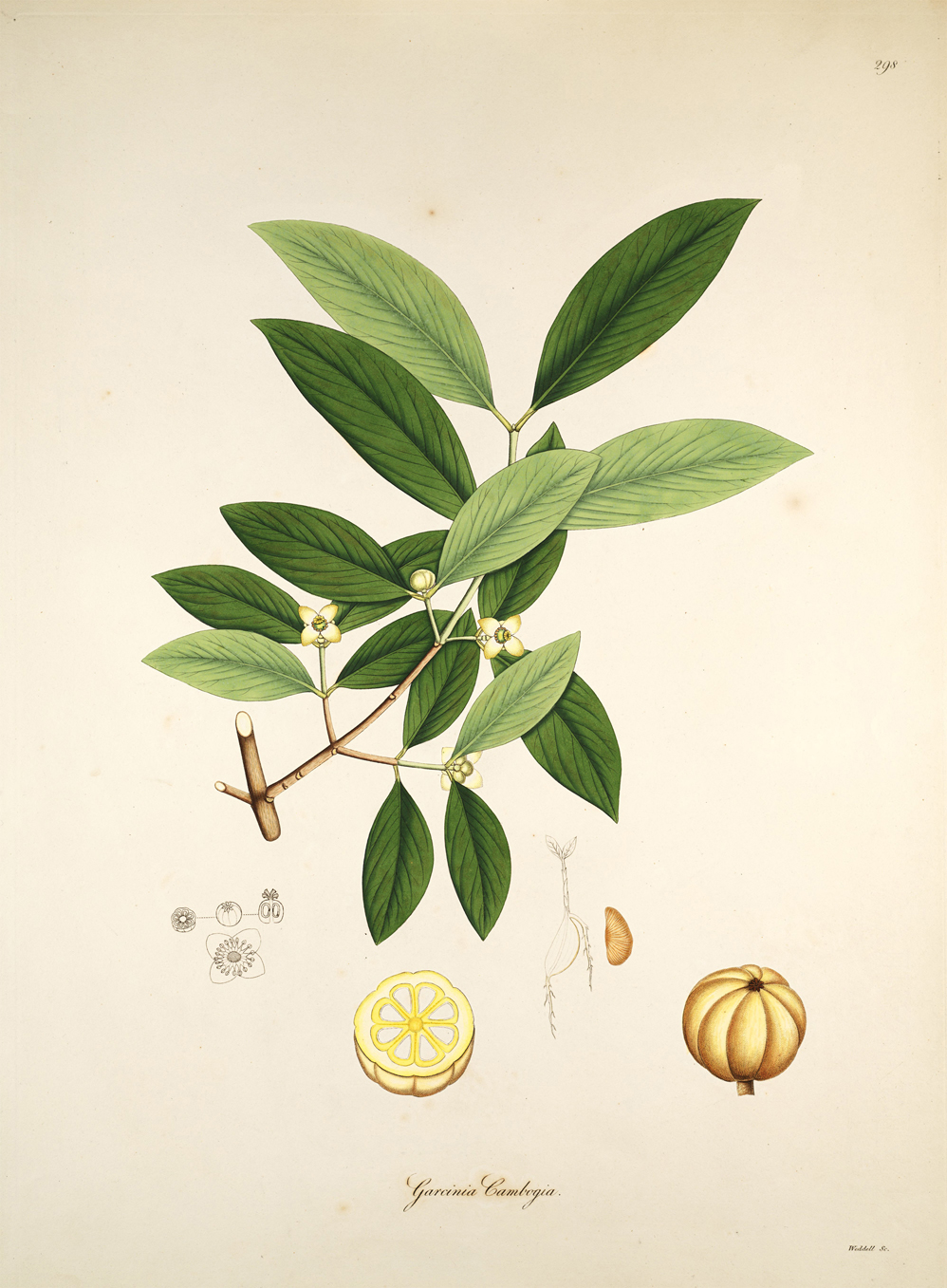The genus Garcinia belongs to Clusiaceae family. The trees are small to medium sized reaching to the height of 30 meters and widely distributed in the tropical regions of the world. Cowa Mangosteen is inherent to East India, Myanmar, Nepal, Thailand, Laos, Kampuchea, Northern Peninsular Malaysia and Vietnam. It is also found in Anadaman, Nicobar Islands and South and West Yunnan in China. This evergreen tree has the bole of 15-20 cm diameter. The bark is dark brown with lemon yellow exudates. Leaves are simple, entire, opposite, 6-15 by 2.5-6 cm, broadly lanceolate to lanceolate-elliptic, thick, glossy green and tapering to both ends. Male flower have four yellow peals which is flushed with pink. Female flowers are solitary, axillary with staminodes united in lower half. Fruits are oblique, sub-globose-globose and 5–6 × 4–5 cm in diameter. Fruits are green when young and turn dull orange or yellow when matured. Seeds are large, trigonous and embedded in pale orange pulp.
Traditional uses
- Bark is used as antipyretic and antimicrobial agent.
- Fruits and leaves are used to improve blood circulation, relieve cough, indigestion and fever.
- The sun dried fruit slices are used to treat dysentery in Eastern India.
- Fruit and leaves have been used for indigestion and improvement of blood circulation.
Culinary uses
- Fruits are made into preserves and jams.
- The sun dried sliced pieces are used to add flavor in various Malay cuisines.
- In Myanmar, Malaysia and Thailand, young leaves and tender leafy shoots are used as vegetables.
- In Thailand, young leaves are consumed cooked. It is also cooked with fish.
- In Vietnam, fruits are used to impart acidic flavor to fish and crab dishes.
References:
https://www.itis.gov/servlet/SingleRpt/SingleRpt?search_topic=TSN&search_value=21483#null
https://www.japsonline.com/admin/php/uploads/1426_pdf.pdf
https://shodhganga.inflibnet.ac.in/bitstream/10603/6470/9/09_chapter%201.pdf
http://tropical.theferns.info/viewtropical.php?id=Garcinia+cowa
https://www.jircas.affrc.go.jp/project/value_addition/Vegetables/054.html
Awesome
Comments
| Cowa Mangosteen Quick Facts | |
|---|---|
| Name: | Cowa Mangosteen |
| Scientific Name: | Garcinia cowa |
| Origin | East India (Assam, Bengal, Mizoram, Bihar and Orissa), Nepal, Myanmar, Kampuchea, Thailand, Laos, Vietnam and northern Peninsular Malaysia |
| Colors | Dull orange or yellow |
| Shapes | Subglobose, 2.5-6 cm |
| Flesh colors | Pale orange |
| Taste | Sour |
| Name | Cowa Mangosteen |
|---|---|
| Scientific Name | Garcinia cowa |
| Native | East India (Assam, Bengal, Mizoram, Bihar and Orissa), Nepal, Myanmar, Kampuchea, Thailand, Laos, Vietnam and northern Peninsular Malaysia |
| Common/English Name | Cowa, Cowa Mangosteen |
| Name in Other Languages | Burmese: Madow, Toungdalai; India: Kangach, Cuithekera, Kujithekera (Assamese), Kau (Bengali), Cowa (Hindu), Bhava, Chenhek ( Mizoram ); Indonesia: Kemenjing, Ki Ceuri ( Java ); Japanese: Kowa Ganboji; Malaysia: Kandis; Nepalese: Kaphal; Philippines: Pildis (Pampanggan), Paninginen (Sambali), Bilukau (Tagalog); Thai: Cha Muang (Central Thailand), Ka Muang, Muang Som (Southern); Vietnamese: Dọc, Tai Chua; Assamese: Kangach, Cuithekera, Kujithekera; Bengali: Kau; Chinese: Yun shu (云树), Yun nan shan zhu zi (云南山竹子); Hindi: Cowa; Thai: Cha muang (ชะมวง), Ka muang (กะมวง), Muang som (มวงส้ม); Vietnamese: Dọc, Tai chua |
| Plant Size | 8-12 meters tall |
| Leaf | Oblong, thick, 6-15 by 2.5-6 cm |
| Fruit shape & size | Subglobose, 2.5-6 cm |
| Fruit color | Dull orange or yellow |
| Pulp | Pale orange |
| Fruit Taste | Sour |


